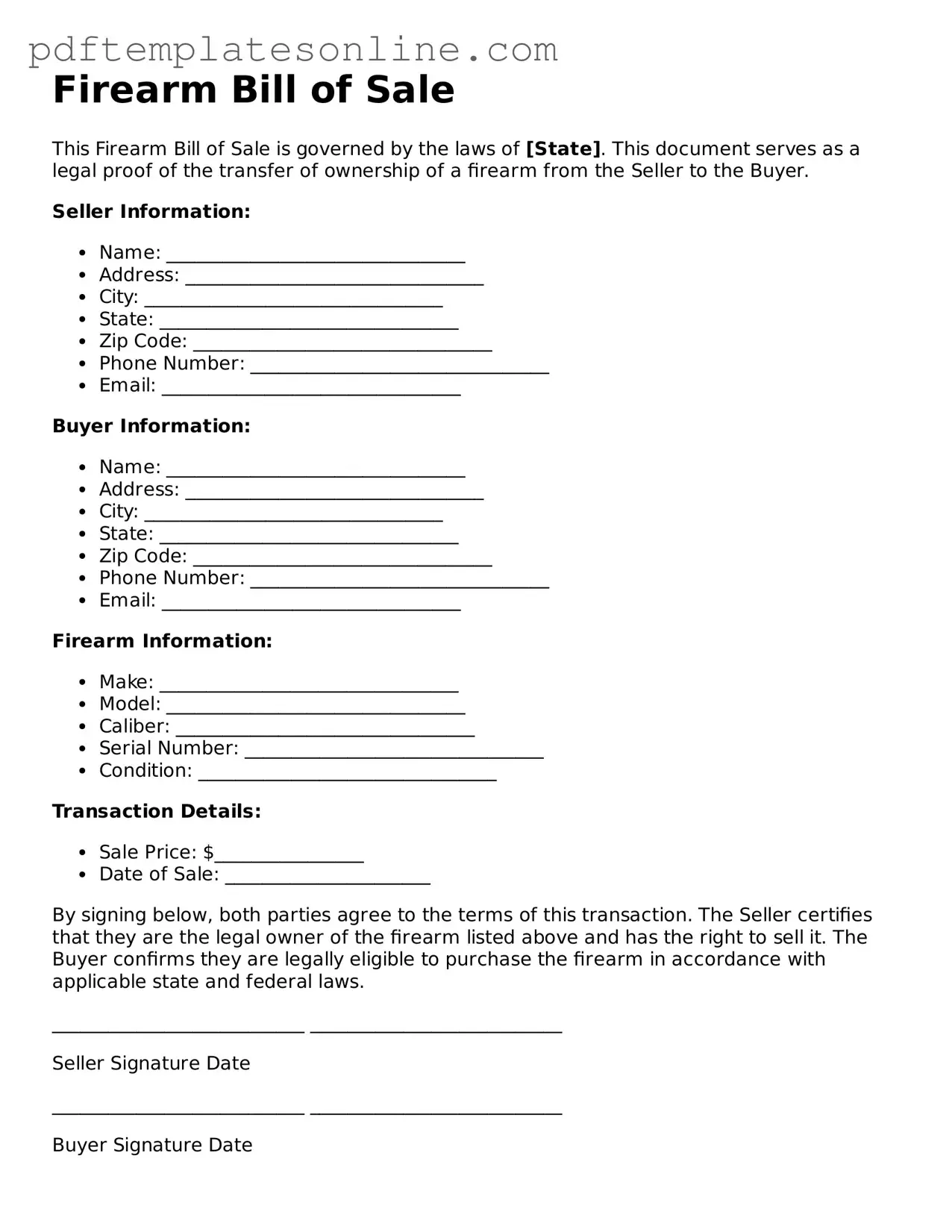When filling out a Firearm Bill of Sale form, individuals often encounter several common mistakes that can lead to complications down the line. Understanding these pitfalls can help ensure a smooth transaction and legal compliance. One of the most frequent errors is failing to include accurate information about the firearm. Buyers and sellers must provide detailed descriptions, including the make, model, and serial number. Omitting or misrepresenting this information can create confusion and potential legal issues.
Another common mistake is neglecting to complete the buyer's information section. This section typically requires the buyer's full name, address, and sometimes even their identification number. Incomplete or incorrect details can invalidate the bill of sale, complicating the transfer of ownership. It is essential to double-check this information for accuracy.
People also often overlook the importance of signatures. Both the buyer and seller must sign the Firearm Bill of Sale to confirm the transaction. Some individuals may assume that a verbal agreement suffices, but without signatures, the document lacks legal standing. This can lead to disputes later on, especially if either party claims that the sale did not occur.
Additionally, many individuals forget to date the document. The date of the transaction is a critical piece of information. It helps establish the timeline of ownership and can be important for legal records. Without a date, the bill of sale may be viewed as incomplete or ambiguous.
Another mistake involves not keeping a copy of the bill of sale. After completing the form, both parties should retain a copy for their records. This documentation serves as proof of the transaction and can be vital if questions arise in the future. Failing to do so can leave one party without essential evidence of ownership.
Finally, many people do not verify the legal requirements specific to their state or locality. Firearm laws vary widely across the United States, and what may be acceptable in one jurisdiction could be illegal in another. It is crucial to research local regulations to ensure compliance and avoid potential legal repercussions.
